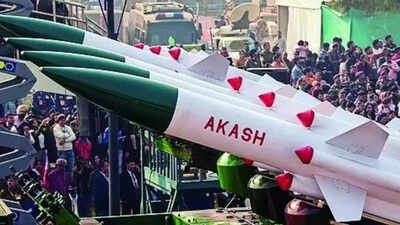NEW DELHI: India kicked off the acquisition process for three highly mobile regiments of indigenous quick reaction surface-to-air missile (QRSAM) systems that can detect and destroy aircraft, attack helicopters, drones, rockets and missiles at ranges of over 30km, at a cost of about Rs 30,000 crore.The Army this week issued the tender or ‘request for proposal’ for the three regiments of the system named “Anant Shastra”.QRSAM offers 360° radar, jamming shield, mobile launchers Anant Shastra has been developed by DRDO and will be co-produced by defence PSUs Bharat Electronics and Bharat Dynamics. The move comes after the intense cross-border hostilities with Pakistan from May 7 to 10 under Operation Sindoor. The Army Air Defence (AAD) has projected a requirement of 11 such QRSAM regiments in the long term, each with nine firing units, while the IAF at present is looking to induct three QRSAM squadrons, as was first reported by TOI.With missile launchers, 360-degree radars, automated command and control systems and all-weather tracking systems mounted on high-mobility 8×8 vehicles, the QRSAM systems are designed to provide air defence cover to tanks, infantry combat vehicles and artillery guns.“With their ‘search, track and fire at short halt’ capabilities, the QRSAM systems will be able to operate on the move with mechanised columns across plains, deserts and mountains both on the western (Pakistan) and northern (China) fronts. They will give protection not only against enemy aircraft but also new-age threats like swarm drones and loitering munitions,” an officer said.The QRSAM systems, with a 30-km interception range to neutralise incoming threats at altitudes of 6 to 10km, are also designed to resist electronic jamming to ensure accuracy even under hostile conditions. “With pre-fragmented warheads, high-speed solid fuel propulsion and network integration with the Army’s Akashteer command & control network, the Anant Shastra will be a tactical game-changer. It will replace old systems such as the Russian-origin OSA-AK to give the Army a faster, smarter and more mobile shield,” another officer said. Once inducted, the QRSAM systems will add to the country’s existing multi-layered air defence network of foreign and indigenous systems, which played a crucial role in thwarting multiple waves of Turkish-origin drones and Chinese missiles launched by Pakistan during the conflict.
Army issues tender for highly mobile air defence system













